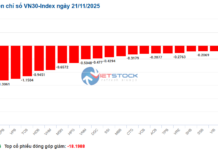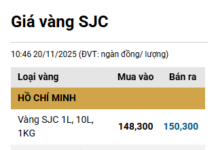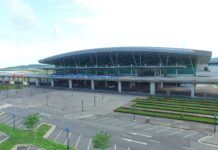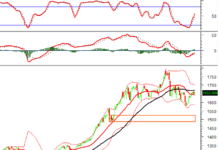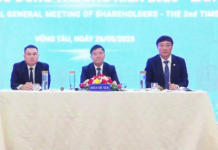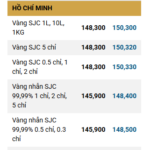 |
Minister of Transport Nguyen Van Thang presents the Government’s proposal on the policy for investing in the high-speed North-South railway project
|
Creating a premise and momentum for socio-economic development
Presenting the Government’s proposal on the policy for investing in the high-speed North-South railway project, Minister of Transport Nguyen Van Thang stated that the construction of the high-speed North-South railway aims to meet transport needs, contribute to restructuring the transport market share on the North-South corridor in an optimal and sustainable way, create a premise and momentum for socio-economic development, and ensure national defense and security.
In terms of investment scope, the high-speed railway starts in Hanoi (Ngoc Hoi Station) and ends in Ho Chi Minh City (Thu Thiem Station), passing through 20 provinces and cities with a total length of approximately 1,541km.
Regarding the investment scale of the project, a new double-track railway will be constructed with a standard gauge of 1,435mm, electrification, a design speed of 350 km/h, and an axle load of 22.5 tons. It will primarily cater to passenger transport, meeting the requirements of dual-use for national defense and security, with the capability of freight transport if necessary.
As for technology, the railway will utilize rails and employ distributed traction technology for passenger trains and centralized traction for freight trains. The signaling and communication systems will be equivalent to those used in developed countries currently operating high-speed railways.
Minister Nguyen Van Thang provided a preliminary report on land clearance and resettlement, stating that the total estimated land requirement for the project is approximately 10,827 hectares, and the number of people to be resettled is about 120,836.
The preliminary total investment for the project is estimated at VND 1,713,548 billion (approximately US$67.34 billion). The expected source of funding is the state budget allocated in the medium-term public investment plans to complete the project by 2035. The capital will be allocated over 12 years, averaging US$5.6 billion per year, equivalent to approximately 1.3% of GDP in 2023 and 1.0% of GDP in 2027 (the expected commencement year of the project). During the implementation process, diverse and legal sources of capital will be mobilized.
Consensus on the necessity of investing in the Project
Reviewing the policy for investing in the high-speed North-South railway project, Mr. Vu Hong Thanh, Chairman of the Economic Committee, stated that following the prescribed procedures and processes, the Standing Committee of the Economic Committee worked with a number of experts, scientists, and associations. They also coordinated with relevant agencies to organize a survey team for the Project and held a plenary session to review the policy for investing in the Project.
The Economic Committee affirmed that the Project is consistent with the criteria for important national projects under the National Assembly’s competence to decide on investment policies. It also basically meets the requirements for dossiers as prescribed by the Law on Public Investment. There was a suggestion for the Government to supplement the dossier proposing the conversion of forest land use to other purposes. At the same time, the Economic Committee agreed on the necessity of investing in the Project based on the political and legal grounds mentioned in the Government’s proposal.
Regarding the scope and scale of investment and the preliminary design, the Economic Committee believes that the Project is basically consistent with the Railway Network Planning for the period of 2021-2030, with a vision towards 2050. Therefore, they basically agreed with the Government’s proposal. It is recommended that during the feasibility study phase, the Government directs relevant agencies to carefully review and select the optimal option for connecting the high-speed railway with the national railway network, urban railways, other transport systems, and international railway networks.
In terms of socio-economic and financial efficiency of the Project, the Economic Committee requested clarification on the basis for calculating the transport demand forecast. In reality, there have been significant discrepancies between the transport demand forecasts of many BOT transport projects and the actual situation, leading to financial inefficiencies and the need to adjust project contracts.
The report of the State Appraisal Council suggested that revenue and revenue growth are currently being projected too high, posing potential risks. Therefore, it is necessary to carefully review and accurately assess the actual financial efficiency of the Project and the potential for the state budget to subsidize losses in the future for transport business operations on the high-speed railway.
Regarding the Project’s capital source, the preliminary total investment is estimated at VND 1,713,548 billion (approximately US$67.34 billion). Compared to the total medium-term investment capital from the central government budget, the preliminary total investment of the Project exceeds (by 114%) the total medium-term investment capital from the central government budget for the 2021-2025 period. It is equivalent to 59.7% of the total medium-term investment capital from the state budget for the 2021-2025 period. Therefore, careful consideration is needed.
On the mechanisms and policies for implementing the Project, especially in terms of investment, the Economic Committee emphasized that the Project plays a crucial strategic role and has a long-term impact on all aspects of the country’s socio-economic development. It is also a very large-scale project with complex technical and technological requirements, which will be implemented in Vietnam for the first time. Therefore, to ensure the feasibility and effectiveness of the Project, it is essential to apply a number of special mechanisms and policies. The Government has proposed 19 groups of mechanisms and policies that are different from current legal regulations. Therefore, it is suggested to supplement a more thorough impact assessment to devise appropriate solutions to limit and overcome negative impacts. It is also necessary to report and seek the opinions of competent authorities on the content of the special mechanisms and policies. Essentially, the proposed mechanisms and policies are necessary, and some of them have been approved by the National Assembly in the past. However, it is recommended to continue reviewing and editing these mechanisms and policies.
Nhat Quang
German Packaging Giant Invests $810 Million, Expands Vietnam Factory to 10ha – The Largest in Southeast Asia
QuickPack has been investing in Vietnam since 2017, with its first factory established in the Thuan Dao Industrial Park, Long An Province. The group is also one of the province’s largest foreign investors, showcasing its commitment to doing business in the country.
Unleashing Vietnam’s Financial Might: Empowering the SCIC Juggernaut to Rival CIC and Temasek.
“International experience has shown that by promoting these ‘powerhouses’, we can achieve tremendous economic strides,” says Mr. Nguyen Ba Hung, Chief Economist at the Asian Development Bank (ADB).
Crafting a Captivating Workforce for the High-Speed Rail Project: A Prelude to Success
The government proposes the construction of a new double-track railway with a standard gauge of 1,435 mm, electrified and designed for speeds of up to 350 km/h. The construction is slated to begin in 2027, and one of the key challenges is the preparation of a skilled workforce, which is estimated to require over 14,000 personnel.

